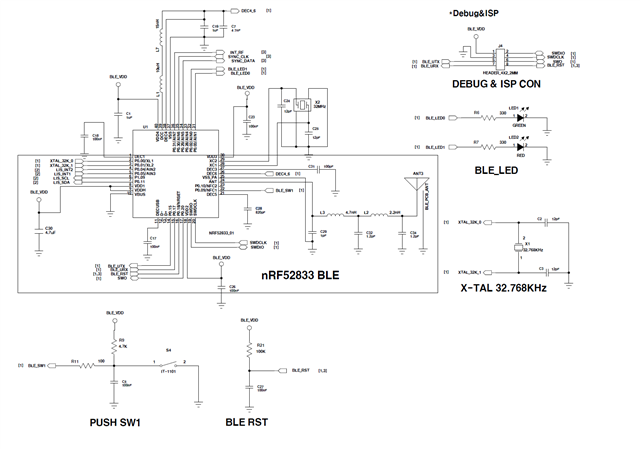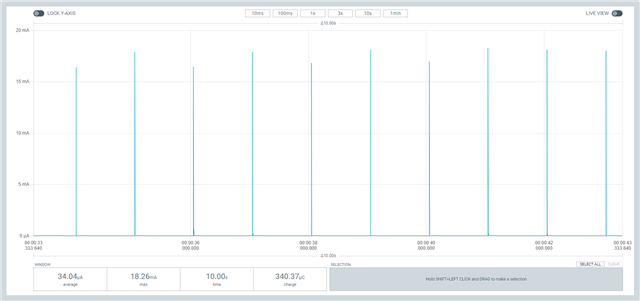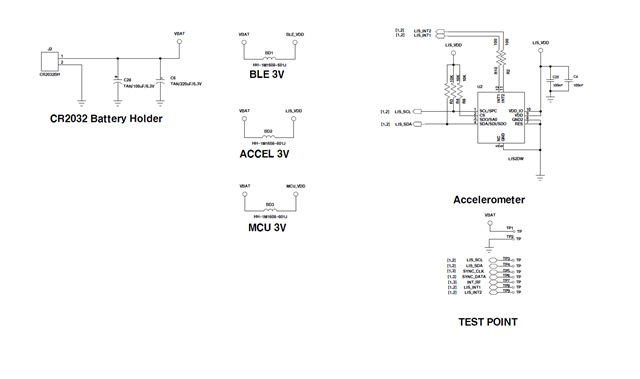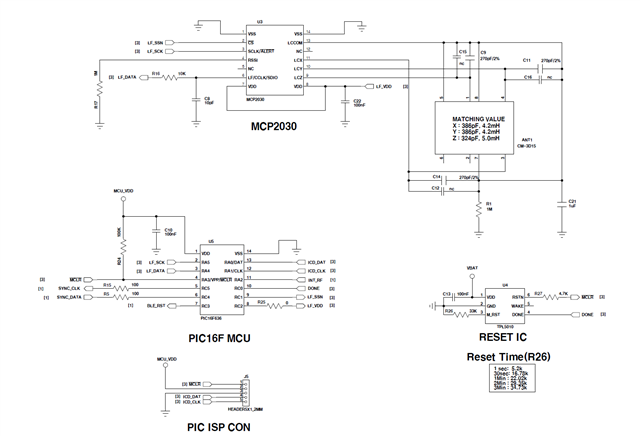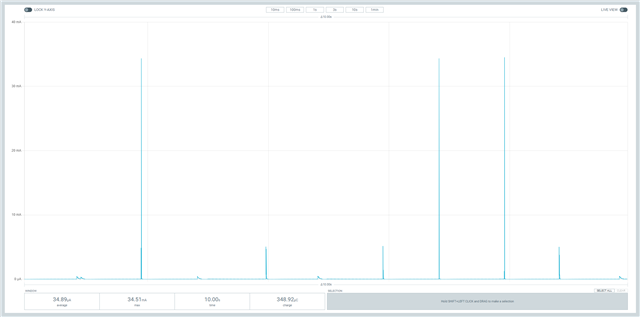
The part where the current goes up is the ESB Tx section. Why does the power consumption vary every time? I am currently using a DCDC regulator and a self-made board.
The main CPU being used is nrf52833.
ESB Tx power consumption appears differently every time, with three different values: 37mA, 5mA, and 500uA
Based on the datasheet, I believe that 5mA is the normal power consumption.
I've looked at other examples in the Q&A, but is this phenomenon that occurs with DCDC regulators a common issue?
Even when I connected 1.3V direct power from PPK to the DCDC regulator pin, the issue did not go away.
What parts should I look at?
I left a response to a previous question, but it got closed so I'm reposting it again.
I used an internal DCDC regulator.
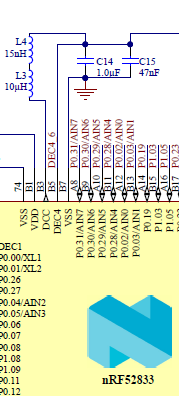
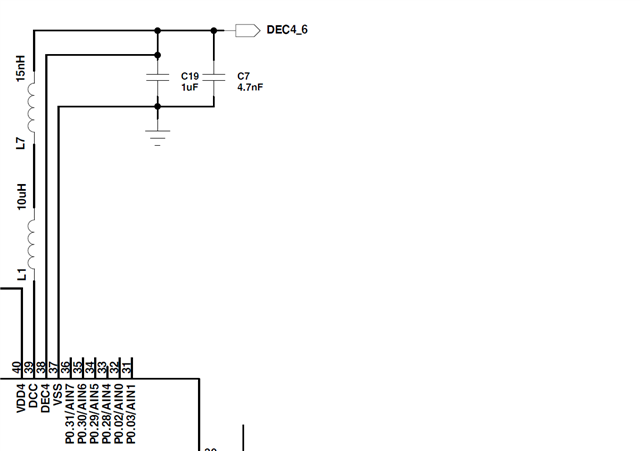
The left image shows the reference circuit of the nRF52833 DK board, and the right one shows the regulator circuit of our own developed board.
I added a DCDC regulator circuit to the DEC4 pin as a reference design like on the DK board.
When power is applied, the DEC4 pin is supplied with a voltage of 1.3V.
When comparing the energy of each spike, the total amount of energy overall is not significantly different. However, I would like this energy to always be the same.
The following picture shows the power consumption when running the same program on the nRF52833DK board.
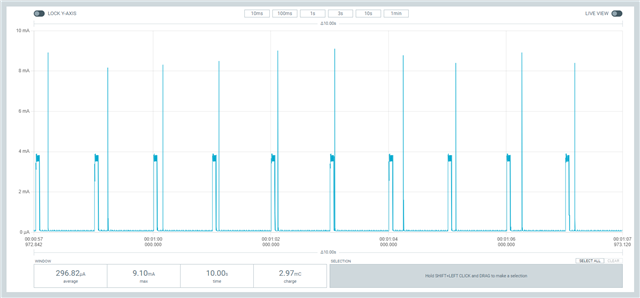
I was able to obtain more consistent values than before.
However, an abnormal waveform appeared before Tx. Although all LEDs were turned off, I cannot determine what the value is.
I also tried changing the value of C7 from 4.7nF to 47nF, but the phenomenon remained the same.
In addition, is the abnormal ESB Tx current consumption also related to antenna matching?



